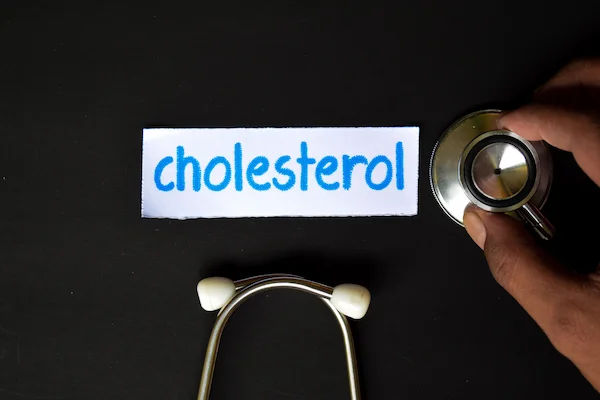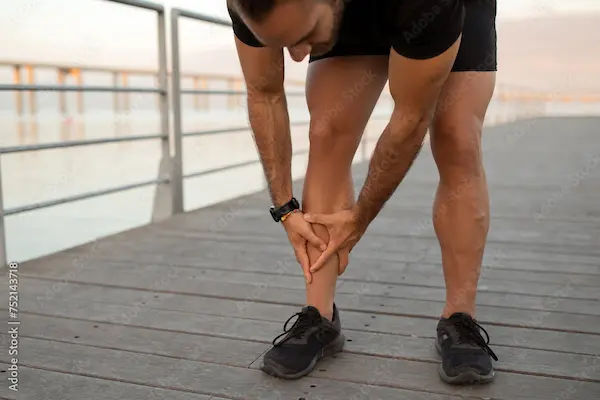Understanding Hypothermia
Learn the signs, symptoms, and causes of hypothermia, a dangerous drop in body temperature. Discover essential prevention tips and crucial first aid steps to take for this medical emergency. Stay safe and informed.

Written by Dr. Dhankecha Mayank Dineshbhai
Reviewed by Dr. Vasanthasree Nair MBBS
Last updated on 23rd Oct, 2025
.webp?tr=q-80,f-webp,w-350,dpr-2,c-at_max 700w)
Introduction
Step outside on a blustery day without the right layers, fall into cold water, or even sit too long in a chilly, drafty room—and your body can begin to lose heat faster than it can make it. That’s when hypothermia, a dangerous drop in core body temperature below 35°C (95°F), can creep in. Hypothermia isn’t just a mountaineer’s problem; it can affect infants, older adults, people with certain medical conditions, and anyone caught unprepared by wind, rain, or power outages. The good news: with a bit of know-how, you can recognize the warning signs early, take the right first-aid steps, and prevent trouble before it starts.
In this guide, you’ll learn what hypothermia is, how your body loses heat, and how to spot mild, moderate, and severe symptoms. We’ll walk through practical, step-by-step hypothermia first aid, what not to do (and why), what hospital treatment looks like, and smart prevention tips for home, work, travel, and the outdoors. We’ll also cover special advice for infants and older adults, cold-water immersion safety, and common myths. Whether you’re planning a winter hike or caring for a loved one at home, consider this your clear, trustworthy reference on hypothermia.
What is hypothermia? A plain-language definition
Hypothermia happens when your core body temperature falls below 35°C (95°F), overwhelming your body’s thermoregulation system. At normal temperatures, your brain (hypothalamus) balances heat production and heat loss by adjusting blood flow to the skin, shivering, and changing your behavior (seeking shelter or adding layers). When heat loss outruns heat production—because of cold air, wind, wet clothing, cold water, or even a cool indoor environment—core temperature drops and body systems slow down. This can impair thinking, coordination, and eventually the heart and lungs. It’s a medical emergency, especially as the temperature falls into moderate and severe ranges.
Clinicians often describe accidental hypothermia in stages because symptoms and first-aid priorities change as core temperature falls. Mild hypothermia symptoms include shivering and cold, pale skin; as temperature drops further, shivering can stop, a dangerous sign that the body’s fuel is running out. Severe hypothermia can lead to confusion, slowed breathing, arrhythmias, and unconsciousness. While hypothermia is commonly linked to winter storms or mountains, indoor hypothermia in winter—especially among older adults or during power outages—is more common than many realize. Understanding what temperature causes hypothermia and how quickly it can develop—minutes in cold water, or hours in a cool room—helps you act fast and prevent complications.
Consult a Top General Physician
Core temperature and why 35°C (95°F) matters
Below 35°C, enzymes and cell processes slow, nerve conduction falters, and the heart becomes irritable. Even a few degrees matter: cognition declines in mild hypothermia, while below ~28°C the risk of life-threatening arrhythmias rises.
Mild, moderate, severe—how clinicians classify hypothermia
- Mild: 32–35°C (95–90°F). Shivering, cold skin, rapid breathing, fatigue.
- Moderate: 28–32°C (90–82°F). Confusion, slurred speech, clumsiness, slow pulse, and less shivering.
- Severe: <28°C (<82°F). Unconsciousness, very slow breathing/pulse, high risk of arrhythmias.
How the body loses heat?: the science behind hypothermia
Understanding how heat escapes helps you prevent hypothermia and choose the right first-aid steps. Your body loses
heat through four main mechanisms:
- Conduction: direct contact with cold surfaces or water. Water conducts heat away about 25 times faster than air, which
is why cold-water immersion hypothermia develops quickly. - Convection: moving air or water carries heat away; wind can strip away the warm air layer near your skin.
- Radiation: heat radiates from warm skin to the cooler environment.
- Evaporation: sweat and wet clothing remove heat as moisture evaporates.
Wind chill magnifies convective heat loss: a 0°C day with strong wind can “feel” much colder and increase
hypothermia risk without proper shielding. Wet clothing (rain, sweat, or falling through ice) increases heat loss via
conduction and evaporation. That’s why “cotton kills” is a common outdoor adage—cotton holds moisture and dries
slowly. In first aid, focusing on rewarming the core (chest, neck, groin) and reducing heat loss (get out of wind/wet) is
more effective than heating limbs first, because warming the core supports vital organs and reduces afterdrop risk.
Conduction, convection, radiation, evaporation
Each mechanism is targeted by prevention: insulation (radiation), windproof layers (convection), waterproof shells and
dry layers (evaporation), and insulating barriers like sleeping pads (conduction).
Wind chill and wet clothing: the double threat
The National Weather Service’s wind chill chart shows how quickly frostbite and hypothermia can occur as wind speed
rises. Even just being damp on a breezy day can tip you from safe to shivering.
Afterdrop explained
Afterdrop is a continued fall in core temperature after removal from the cold, caused by cold blood from extremities
returning to the core as circulation improves. Minimizing movement and warming the core first helps reduce it.
Stages and symptoms you can recognize
Mild hypothermia symptoms (32–35°C): shivering, goosebumps, cold and pale skin, fast breathing and heart rate,
fatigue, clumsiness, and trouble concentrating [2][3]. Shivering is your body’s built-in heat factory; its presence is a good
sign that your thermoregulation still has fuel. Mild hypothermia first aid focuses on getting the person dry, sheltered,
and warmed—ideally with warm, sweet drinks if they are fully awake and can swallow safely.
Moderate hypothermia symptoms (28–32°C): shivering may slow or stop, thinking gets foggy, speech slurs, movements
become uncoordinated, heart rate and breathing slow. The person may seem apathetic or confused, misjudge risks, or
display paradoxical behaviors. This is when bystanders might underestimate danger because the person can still talk.
Handle gently, minimize exertion, and begin active rewarming of the core while arranging urgent medical care .
Severe hypothermia symptoms (<28°C): the person may be unconscious, with very slow or hard-to-detect breathing and
pulse. The heart is irritable; rough handling can trigger dangerous arrhythmias. In these cases, it’s a medical emergency
requiring advanced care. Begin CPR if there is no normal breathing and no pulse, and use an AED if available;
continue until professionals take over. There’s an old adage in hypothermia care: “They’re not dead until they’re warm
and dead,” underscoring the potential for survival even after prolonged cold exposure when managed properly.
Causes and risk factors: who is most at risk?
Environmental exposure is the most obvious cause—cold, wind, and wet—but hypothermia can develop in mild
weather if a person is wet or exhausted. Cold-water immersion hypothermia accelerates heat loss dramatically. High
altitude, where dehydration and fatigue set in quickly, adds risk. Indoors, hypothermia can occur in underheated homes, during power outages, or in people with limited mobility who can’t adjust their environment.
Medical and behavioral risk factors include:
- Older age: decreased shivering, thinner skin, medication effects, and isolation.
- Infants and newborns: higher surface area-to-mass ratio, immature thermoregulation.
- Chronic illnesses: hypothyroidism, diabetes, malnutrition, stroke, dementia.
- Medications: sedatives, antipsychotics, certain antidepressants, and beta-blockers can blunt responses.
- Alcohol or drug use: alcohol causes vasodilation, making you feel warm while you lose core heat faster; it also impairs
judgment. - Fatigue, dehydration, inadequate clothing, and poor nutrition increase risk.
Hypothermia indoors vs outdoors: not just a winter hazard
Most people picture snowstorms, but indoor hypothermia is a silent threat. During cold snaps or power outages, indoor temperatures can fall into the low teens (°C) or lower—especially overnight—leading to progressive cooling over hours. Older adults, infants, and people with limited mobility may not notice or be able to adjust layers or heating. Warning signs at home include persistent shivering, cold hands and feet, confusion, and drowsiness. In vehicles, hypothermia can develop if stranded without heat; in shelters, overcrowding with damp clothing can also be risky.
Practical tips:
- Keep living spaces at safe temperatures; use room thermometers in bedrooms.
- Layer clothing indoors (including hats and warm socks); use blankets over shoulders and laps.
- Avoid alcohol as a “warmer”; it increases heat loss.
- For caregivers, check in frequently on older relatives/neighbors during cold spells. If a person seems unusually drowsy,
confused, or stops shivering, call emergency services.
Cold-water immersion: the 1-10-1 rule and rescue
Cold-water immersion brings three distinct phases often summarized by the “1-10-1 rule”:
- 1 minute: Cold shock—gasping and rapid breathing. Focus on keeping your airway above water. Don’t panic; control
your breathing [5]. - 10 minutes: Useful movement—your hands and arms work for about 10 minutes to help self-rescue before a cold
disables fine motor skills. - 1 hour: Consciousness—roughly one hour before unconsciousness due to hypothermia, depending on temperature, body
size, and clothing.
Self-rescue strategies:
- If in a group, keep together and link arms for stability.
- If alone and you cannot exit, assume the Heat Escape Lessening Posture (HELP): knees to chest, arms crossed tight,
face out of the water; or huddle as a group. Keep as much of your body out of the water as possible, using flotation [5]. - Once out, avoid vigorous movement. Remove wet clothing, insulate, and prioritize warming the core.
Rescuers should avoid direct entry into cold water unless trained and equipped. Use reach-throw-row-go: reach with a long object, throw a flotation aid, row a boat if available, and only go in as a last resort with a lifeline. After rescue, assume afterdrop can occur; handle gently, keep the person horizontal, and begin rewarming [5][6].
First aid for hypothermia: a step-by-step guide
If you suspect hypothermia, call local emergency services—especially for moderate or severe symptoms.
Then:
1) Ensure scene safety. Get the person out of the wind and wet, into shelter or a vehicle. Remove wet clothing and
replace it with dry layers, including head and neck coverage.
2) Quick assessment (AVPU): Are they Alert, respond to Voice, to Pain, or Unresponsive? Check breathing and pulse;
in severe hypothermia, these can be very slow—take up to 60 seconds to assess.
3) Gentle handling. Keep the person horizontal and minimize movement to reduce afterdrop and arrhythmias. Do not
rub limbs.
4) Insulate and rewarm the core: Wrap with dry blankets/sleeping bag; add warm packs to armpits, chest, and groin
(never directly on skin; wrap in cloth). Avoid direct heat like hot water bottles on bare skin or heating pads, which can
burn or cause arrhythmias.
5) Warm, sweet fluids if fully awake and able to swallow: tea, soup, or an electrolyte drink helps provide fuel for
shivering. Do not give alcohol or caffeine.
6) Monitor continuously. If no normal breathing and no pulse, begin CPR and use an AED if available. Continue until
professionals take over or the person shows signs of life.
For mild hypothermia first aid steps at home, sustained rewarming in a warm room, dry layers, warm drinks, and food
are often sufficient. If symptoms don’t improve within 30–60 minutes or if confusion develops, seek medical care. If symptoms persist or recur over days or you have underlying conditions like thyroid disease or anemia, consider consulting a doctor online with Apollo24|7 for further evaluation. Apollo24|7 also offers convenient home collection for tests like TSH, CBC, vitamin D, or HbA1c when clinically appropriate.
What not to do and why?
- Don’t apply direct heat to limbs or use hot baths/showers in moderate to severe hypothermia. Rapid peripheral rewarming can shunt cold, acidotic blood to the core, worsening afterdrop and triggering arrhythmias.
- Don’t vigorously massage or rub extremities. It increases peripheral circulation abruptly and can damage cold tissues.
- Don’t give alcohol. It dilates blood vessels, increases heat loss, and impairs judgment.
- Don’t assume someone is dead because they are very cold and pulseless. Hypothermia can mimic death. Begin CPR if
there are no signs of life and continue until professionals arrive. - Don’t let the person exert themselves unnecessarily. Walking can worsen afterdrop and precipitate collapse.
- Don’t use tight tourniquets or restrictive clothing; they can trap cold blood or impair rewarming.
Unique insight: Think “warm, wet lungs” before “warm, wet skin.” Breathing warm, humidified air (in medical settings) warms the core more efficiently than heating limbs; at home, focus on passive external rewarming plus warm fluids if safe.
Related keywords used: afterdrop phenomenon; hypothermia risk factors alcohol.
Medical treatment and recovery: what to expect in hospital
In the hospital, clinicians will confirm core temperature (esophageal or rectal probe), monitor heart rhythm, and treat complications. Rewarming techniques are tailored to severity:
- Passive external rewarming: warm environment, blankets, warmed IV fluids for mild cases.
- Active external rewarming: forced warm air blankets (e.g., Bair Hugger) for moderate cases.
- Active internal (core) rewarming: warmed IV fluids, heated humidified oxygen, warm bladder or gastric lavage,
peritoneal lavage, or even extracorporeal life support (ECLS/ECMO) for severe hypothermia with instability or cardiac
arrest.
Continuous monitoring is essential; J waves (Osborn waves) on ECG can appear in hypothermia. Electrolytes, glucose,
and acid-base balance are corrected. Complications can include pneumonia, rhabdomyolysis, pancreatitis, or
coagulopathy, depending on exposure and rewarming course. Many patients recover well with timely care; even some
prolonged arrests in cold water have favorable outcomes with ECMO-supported rewarming.
After discharge for mild cases, rest, gradual return to activity, and attention to nutrition and hydration are key. If your condition does not improve after trying these methods, book a physical visit to a doctor with Apollo24|7. For recurrent cold intolerance, your clinician may consider screening for hypothyroidism, anemia, diabetes, or nutritional deficiencies. Apollo24|7 offers convenient home collection for tests like TSH, CBC, HbA1c, and vitamin D, where appropriate.
Unique insight: Expect fatigue for days after moderate hypothermia. Your body has burned through glycogen, and rewarming is metabolically taxing—plan recovery time.
Related keywords used: accidental hypothermia treatment; rewarming techniques for hypothermia.
Prevention: clothing, planning, and smart habits
A little planning goes a long way:
- Dress in layers: moisture-wicking base (synthetic/merino), insulating mid (fleece/wool), windproof/waterproof shell.
Avoid cotton; it holds moisture and cools you when you stop moving. - Manage moisture: vent layers to prevent sweat buildup; carry a spare dry base layer and socks.
- Protect head, neck, hands, and feet: a warm hat and neck gaiter reduce heat loss; insulated, waterproof gloves and
socks keep extremities functional. - Check weather and wind chill: plan routes with bail-out options, set a turnaround time, and tell someone your plan.
- Pack essentials: emergency bivy/shelter, fire starter, extra calories, warm drink in a thermos, and a closed-cell foam pad
to sit/lie on (reduces conductive loss). - Limit alcohol; hydrate and eat regularly.
- For group activities, use a buddy system and watch for early signs like clumsiness or slurred speech.
Nutrition and hydration in cold weather
Cold air is dry, and you can lose significant fluid through breathing and sweat without noticing. Dehydration thickens
blood and can impair circulation, making you feel colder. Aim for steady hydration; warm, lightly sweetened drinks are
easier to consume in the cold and provide quick fuel. Before activity, eat a balanced meal with complex carbs, protein, and some fat. During extended efforts, snack every 45–60 minutes: nuts, trail mix, energy bars, or sandwiches. After activity, refuel with carbs plus protein to restore glycogen and support recovery.
For people with diabetes, hypoglycemia can mimic or worsen hypothermia symptoms; monitor glucose and carry fast-acting carbs. If you’re managing chronic conditions or special diets, discuss cold-weather fueling with your clinician. If symptoms persist beyond two weeks—such as ongoing cold intolerance or fatigue—consult a doctor online with Apollo24|7 for further evaluation.
Hypothermia in infants and older adults: special care
Infants and newborns lose heat quickly due to a high surface-area-to-mass ratio and limited shivering. Keep rooms warm, dress infants in one more layer than adults, use hats, and practice skin-to-skin contact for newborn thermal protection (a component of Kangaroo Mother Care). Avoid overdressing or overheating; monitor for sweating and adjust layers. Never place space heaters or hot water bottles directly near infants. For newborns, consistent thermal care can reduce neonatal hypothermia and related complications.
Older adults may have blunted shivering and may not feel cold as acutely. Chronic conditions and medications can mask symptoms. Strategies include maintaining indoor temperatures, layering clothing, using programmable thermostats, ensuring adequate nutrition, and regular check-ins by family or caregivers. Watch for subtle signs: confusion, slowed speech, unusual sleepiness, or cool skin. If you’re caring for someone at risk, prepare a simple hypothermia plan: who to call, where extra blankets and dry clothes are, and how to warm drinks safely.
If an infant or older adult shows signs of moderate to severe hypothermia, seek emergency care immediately. For milder, recurring cold intolerance in older adults, consider consulting a doctor with Apollo24|7; screening for anemia, thyroid disorders, or malnutrition may help. Apollo24|7 offers home collections for labs like TSH, CBC, vitamin D, and HbA1c.
Myths vs facts
- Myth: “Alcohol warms you up.” Fact: It makes you feel warm while your core heat loss accelerates.
- Myth: “Rub cold hands and feet to warm them.” Fact: In hypothermia, vigorous rubbing can worsen afterdrop and
harm tissues. - Myth: “It’s not that cold; hypothermia can’t happen today.” Fact: Wind and wet can trigger hypothermia at
temperatures well above freezing. - Myth: “Shivering means you’re fine.” Fact: Shivering is an early warning; when shivering stops, the risk is rising.
- Myth: “Hot showers are best for rewarming.” Fact: For moderate to severe hypothermia, hot showers can cause
collapse and afterdrop—seek medical care.
Conclusion
Hypothermia isn’t just a mountaintop emergency—it can happen at home, at work, on the road, or during a casual day outdoors when wind, wet, and fatigue line up. The keys to staying safe are simple: understand how your body loses heat, recognize early signs like shivering and clumsiness, and act quickly with smart first aid—get dry, get insulated, warm the core, and avoid common mistakes like rubbing limbs or using alcohol. In emergencies, call for help, handle gently, and be patient; recovery is possible even after significant cold exposure with the right care.
Consult a Top General Physician
Consult a Top General Physician

Dr. Maharshi Desai
General Physician/ Internal Medicine Specialist
14 Years • MBBS, MD (Int. Med.), FNB (Critical Care)
Ahmedabad
Apollo Hospitals Gandhinagar, Ahmedabad
(50+ Patients)

Dr. Rama Narasimhan
General Physician/ Internal Medicine Specialist
20 Years • MBBS, MD
Chennai
Apollo Hospitals Greams Road, Chennai

Dr. Subashini Venkatesh
General Physician/ Internal Medicine Specialist
25 Years • MBBS., DCH, MRCGP, Dip (Dermatology), CCT
Chennai
Apollo Hospitals Heart Centre Thousand Lights, Chennai
(25+ Patients)

Dr. Promise Jain
General Physician/ Internal Medicine Specialist
20 Years • MBBS, DNB Medicine, TDD, MNAMS, PGCDM, CCEBDM, CCMTD,PGDE Senior Consultant- Internal Medicine Head- Department of critical care Apollo Sage Hospital, Bhopal, MP Intensivist, Diabetes, Thyroid , Physician
Bhopal
Apollo Sage Hospitals, Bhopal
Dr Rakesh Ram
General Physician/ Internal Medicine Specialist
4 Years • MBBS, MD (INTRNAL MEDICINE)
Secunderabad
Apollo Hospitals Secunderabad, Secunderabad
Consult a Top General Physician

Dr. Maharshi Desai
General Physician/ Internal Medicine Specialist
14 Years • MBBS, MD (Int. Med.), FNB (Critical Care)
Ahmedabad
Apollo Hospitals Gandhinagar, Ahmedabad
(50+ Patients)

Dr. Rama Narasimhan
General Physician/ Internal Medicine Specialist
20 Years • MBBS, MD
Chennai
Apollo Hospitals Greams Road, Chennai

Dr. Subashini Venkatesh
General Physician/ Internal Medicine Specialist
25 Years • MBBS., DCH, MRCGP, Dip (Dermatology), CCT
Chennai
Apollo Hospitals Heart Centre Thousand Lights, Chennai
(25+ Patients)

Dr. Promise Jain
General Physician/ Internal Medicine Specialist
20 Years • MBBS, DNB Medicine, TDD, MNAMS, PGCDM, CCEBDM, CCMTD,PGDE Senior Consultant- Internal Medicine Head- Department of critical care Apollo Sage Hospital, Bhopal, MP Intensivist, Diabetes, Thyroid , Physician
Bhopal
Apollo Sage Hospitals, Bhopal
Dr Rakesh Ram
General Physician/ Internal Medicine Specialist
4 Years • MBBS, MD (INTRNAL MEDICINE)
Secunderabad
Apollo Hospitals Secunderabad, Secunderabad
More articles from General Medical Consultation
Frequently Asked Questions
1) What are the first signs of hypothermia?
Early signs include shivering, cold and pale skin, clumsiness, and trouble concentrating. If symptoms progress to confusion or slurred speech, seek medical care. Include hypothermia first aid steps like removing wet clothing and warming the core.
2) Can hypothermia happen indoors?
Yes. Indoor hypothermia in winter can develop in underheated homes, during power outages, or in people with limited mobility. Keep rooms warm, layer clothing, and check on vulnerable neighbors and family.
3) What’s the difference between hypothermia vs frostbite?
Hypothermia affects core temperature and the whole body; frostbite is localized freezing of tissues (fingers, toes, ears, nose). Both can occur together in cold, windy conditions.
4) How long does it take to get hypothermia in cold water?
It varies with water temperature and clothing. Cold shock happens in the first minute; you typically have about 10 minutes of useful movement before muscle function declines—the “1-10-1 rule” for cold water immersion hypothermia.
5) When should I see a doctor?
Any moderate or severe symptoms require emergency care. If mild symptoms don’t improve within an hour after rewarming, or if you have recurring cold intolerance, consult a doctor online with Apollo24|7. Tests like TSH, CBC, HbA1c, and vitamin D can be arranged with home collection if needed.




